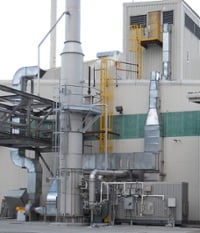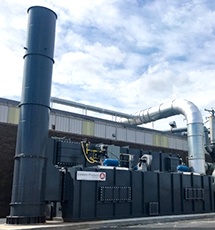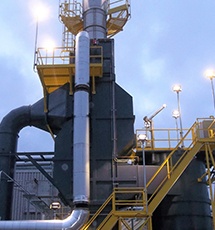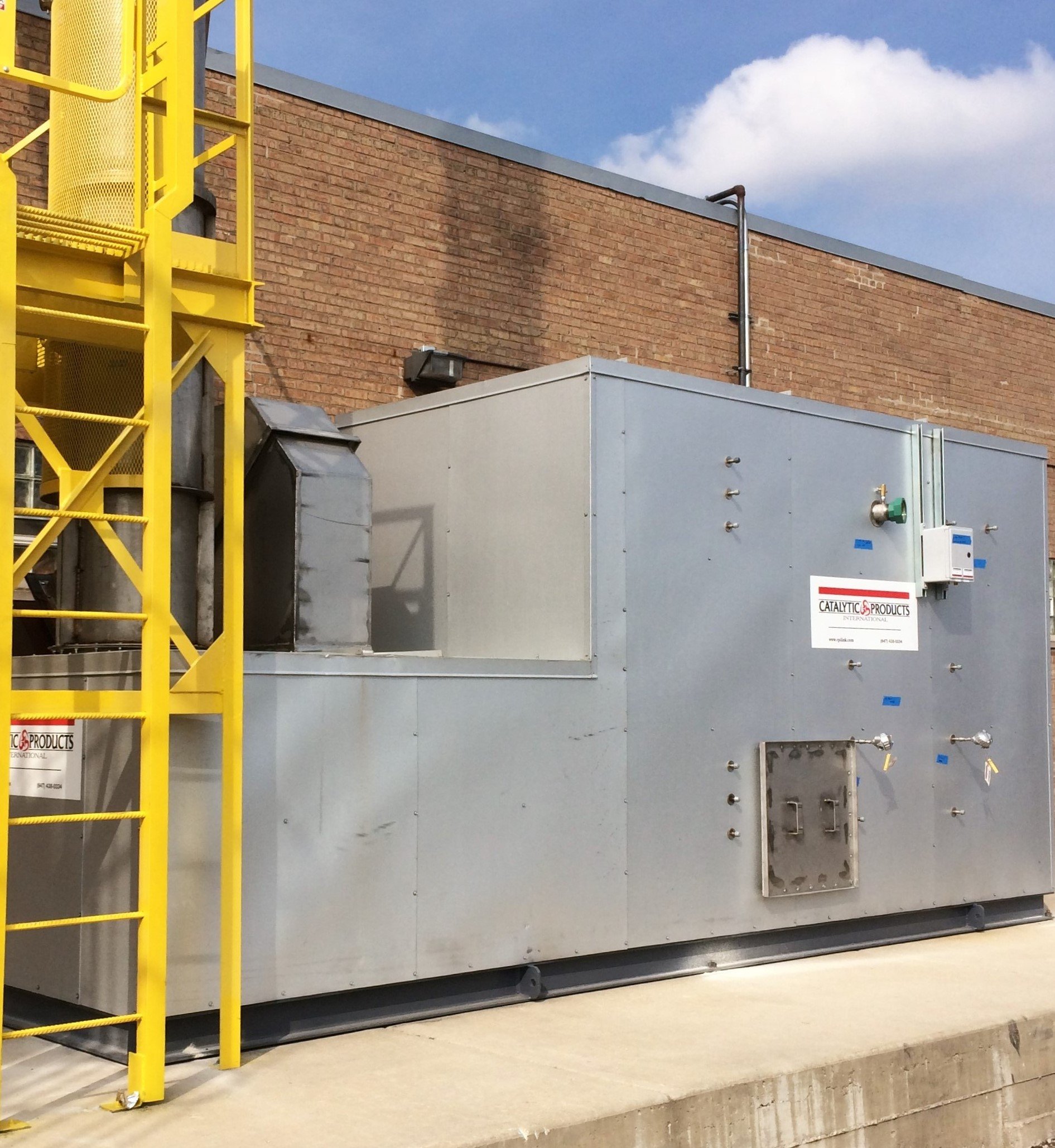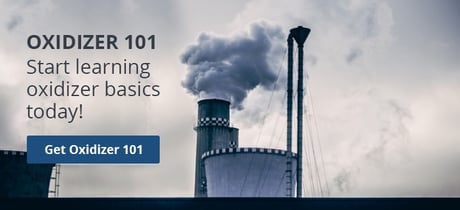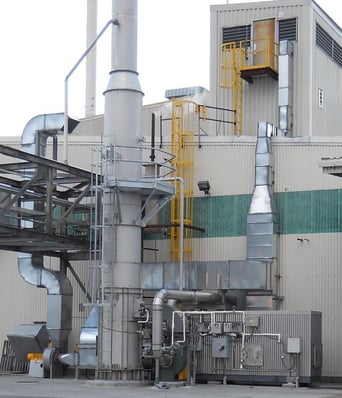
Catalytic Products International (CPI) installed an electrically heated Catalytic Oxidizer at a Southeastern USA chemical manufacturing facility for the abatement of Ammonia and Volatile Organic Compounds (VOCs).
The 1,000 SCFM Electric Catalytic Oxidizer (ERCO) controls the exhaust from a catalyst production process line. The flameless, electric oxidizer system will destroy the Ammonia (NH3) and VOC emissions, mainly hydrogen cyanide (HCN), from the process line with 99% destruction rate efficiency (DRE).
Catalytic Oxidizer treatment of ammonia (NH3) and VOCs works by reacting the harmful air pollutants over a specially designed catalyst where NH3 and VOCs are converted to harmless nitrogen (N2), carbon dioxide (CO2), water vapor (H2O), and usable heat. The CPI Electric Recuperative Catalytic Oxidizer utilizes a high velocity mixing chamber at the heater which forces turbulence to occur, providing excellent mixing of the air stream. With high mixing, the VECTOR system can deliver high temperature uniformity before the catalyst bed which ensures that 100% of the catalyst is efficiently oxidizing the NH3 and VOCs.
CPI provided engineering, design and supply of the Electric Oxidizer. The Electric Catalytic Oxidizer was designed and shipped to allow for simple installation. This approach guaranteed that the entire system was installed correctly with minimal impact on the operations.
In addition, CPI provided a stainless steel exhaust stack, fans, dampers, control panel upgrades, and startup for the newly installed electrically heated Catalytic Oxidizer.
CPI has been “Enabling Clean Production™ Since 1969” and continues as a leading supplier of air pollution control equipment. CPI is at the forefront in providing industries, including chemical manufacturing, with solutions to their air pollution control needs.
Today, CPI partners with its customers as a trusted resource in resolving the most complex air pollution and energy conservation problems. We provide our customers with innovative and cost-conscious solutions to their most complex NH3, VOC, NOx, and Odor pollution challenges. Our equipment is also at work meeting energy conservation strategies and minimizing greenhouse gas (GHG) emissions.

